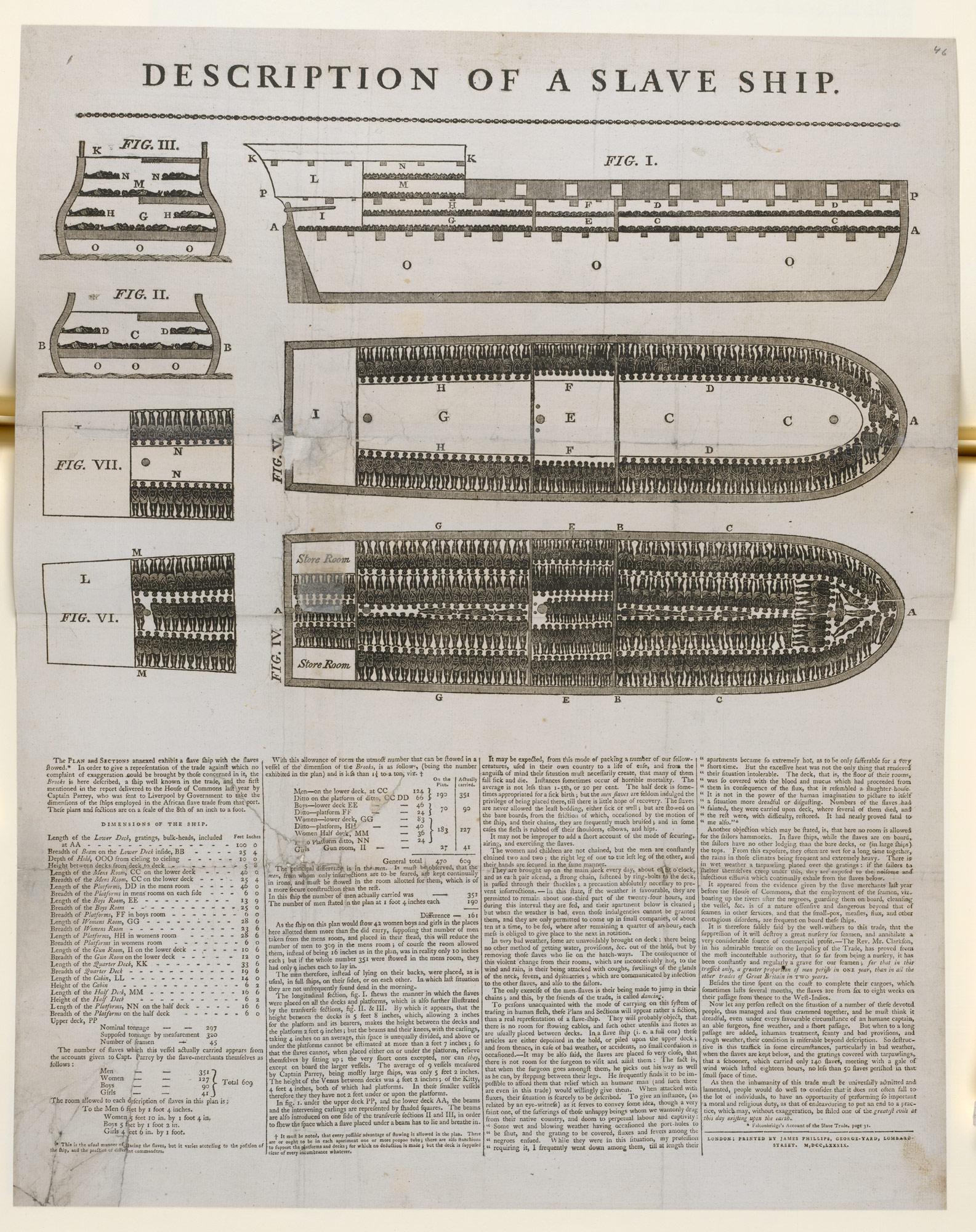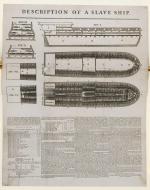Created by Anthony Stephens on Tue, 03/29/2022 - 00:13
Description:
This ship, named “Brookes”, was used to transport slaves in the late 18th century. However, this vessel was not originally designed to carry persons. To the left of the image you can see profile images that shows slaves were kept in the “hold” of the ship. The hold is the area of a ship designed to carry cargo, supplies, and any other objects that were not needed in higher decks. This area is often cold and dark to preserve goods if they were being transported across nations.
This image here was used to heighten the knowledge of what slave conditions were like. Used by slave-abolitionists, this image would be posted in areas of high traffic and published in popular reading formats. It would be put up near taverns and groceries. Members of campaigns trying to abolish slavery would use their connections to get the image printed in newspapers or books. Slave-abolitionists knew the image was a kept secret of the slave trade. Although members of England knew that slavery was in effect, they were not informed on how the conditions of slaves was.
This image of Brookes shows a depiction of how around 450 slaves would be crammed into the hold of a ship everyday for months at a time. Figure 1 gives a shocking representation of how close each slave was forced to lay next to another. Figures 2 and 3 show that aside from being so close together, slaves were stacked up only a few feet from each other. Slaves were not even given the smallest liberty of being able to stand. This image was spread across cities to inform citizens on the horrors of being captured as a slave. When first looking at the image they would understand slaves were treated like objects and not people. They would begin to imagine themselves in a similar situation that would cause horrific uncomfort and depressing hours spent with hundreds of others.
The image of the Brookes led to common citizens questioning what they knew about slavery. By using this the intention of Slave-Abolitionists was not to convince members of society to vote against slavery, but to catch their eye about what they did not know. Although the end purpose was to eventually stop slavery entirely, an early tactic was to inform citizens of the horrors taking place in the West-Indies. When someone took the time to think about how awful these slaves were treated they would ask themselves things like, “If I didn’t know it was this bad, what else do I not know about?” Ultimately this led to them listening to Abolitionists and wanting to become more educated of something they were kept away from.
When looking at Romantic Literature in relation to something like this, there is a large element of cause and effect. For example we might hear of a character who owns property in a far land. This property would be ran by a manager and would have slaves working in its field. This is one example that comes up commonly. However, each person knowing it or not had an impact on why slaves were being used. The dramatic circumstances slaves went under were a result in a high need for good like sugar, tobacco, tea, cotton, wool, etc. The need for these goods drove prices higher which changed how much production was needed. The heightened production called for more hands in the field at a lower cost. And so, maybe a character is a large supplier of wool or they use tea for gatherings and parties. All of these actions were oppositely coming at the hands of slaves far away in horrendous conditions.
Clarkson , Thomas. “Diagram of the ‘Brookes’ Slave Ship.” British Library, https://www.bl.uk/collection-items/diagram-of-the-brookes-slave-ship.
Copyright:
Associated Place(s)
Part of Group:
Featured in Exhibit:
Artist:
- Thomas Clarkson


